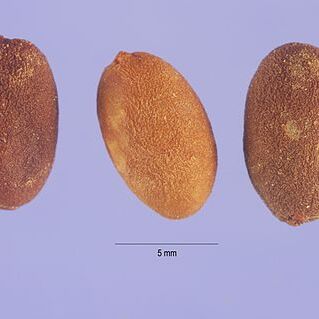Scrambling shrubs to 2.5 m tall; twigs sinuous, flattened and furrowed, mi-nutely puberulent on emerging, soon glabrous, solid. Leaves opposite, simple (ternate), entire, ovate or elliptical, sometimes rotund, apically short, acuminate or acute, basally rounded or obtuse, coriaceous, the midvein impressed above, elevated beneath, the lateral veins 6-7 on each side, obtuse to the midvein, gla-brous on both sides, minutely (under x 45 magnification) punctate beneath; petioles 10-30 mm long, canaliculate and pubescent above, glabrous beneath, articulated below the middle. Inflorescences terminal, small, more or less con-gested, dichasial panicles, the dichotomies marked by conspicuous ridges; pe-duncles 15-30 mm long; pedicels 2-5 mm long, minutely pubescent, subtended by scalelike bractlets. Flowers fragrant; calyx glabrate, the cup 3 mm tall, the teeth 5-7, often unequal, 5-6 mm long, linear but appearing succulent; corolla white drying orange brown, salverform, the tube ca. 2 cm long, the lobes thick, ca. 10 mm long. Fruits ellipsoidal, maturing black, 12-14 mm long, assymetrical.
More
A bushy evergreen climber. It grows to 3 m tall. The stem can be 7 cm across. The leaves occur in rings around the stem. They are thick and mid green. The leaflet is 5-10 cm long and has an abrupt sharp point. The flowers occur in loosely branched flower stalks of 60 flowers. They are white and 2 cm across. The flower buds are red. They have a strong fragrance at night. The fruit are small fleshy berries.
A tropical plant. The minimum temperature is 10-13 °C. It grows easily in warm, humid places. It grows in a range of locations from swamps, near rivers, on dry land and in open thicket and forest. It can be on the edges of mangroves.

